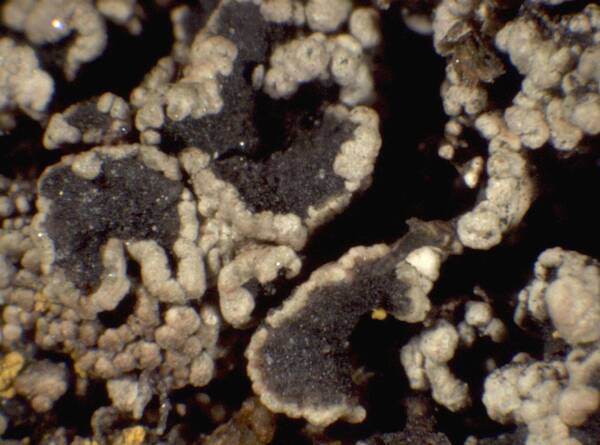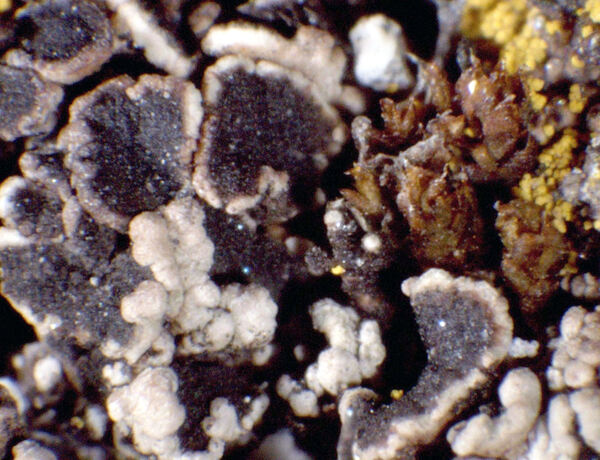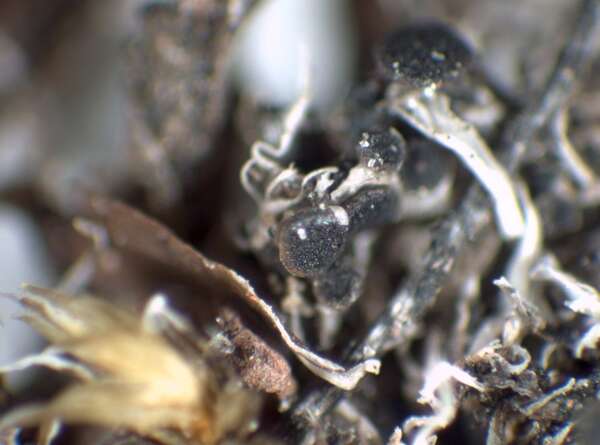Rinodina olivaceobrunnea C.W. Dodge & G.E. Baker
Ann. Miss. Bot. Gard., 15: 659, 1938.
Synonyms: Rinodina archaea f. minuta Anzi ex Arnold; Rinodina archaeoides H. Magn.; Rinodina soredicola Degel.; Rinodina ventricosa Hinteregger & Giralt
Distribution: N - Ven (Caniglia & al. 1999, Nascimbene & Caniglia 2000, Tomaselli & al. 2006), TAA (Nascimbene & al. 2022), Lomb. C - Sar. S - Cal (Nascimbene & al. 2021), Si.
Description: Thallus crustose, episubstratic, very thin and often inconspicuous, continuous to granular, whitish grey to brownish, without a clear prothallus. Apothecia lecanorine, 0.2-0.7 mm across, constricted at base, with a pale to dark brown, flat to convex disc, a thin, often granular, finally sometimes excluded thalline margin, and sometimes a thin parathecial ring. Thalline exciple corticate, the cortex 20-40 μm thick, paraplectenchymatous with 3-7 µm wide cells, I-; proper exciple thin, colourless or brownish in exposed parts; epithecium brown, 10-15 μm high, K-; hymenium colourless, 70-90 μm high; paraphyses 1.5-2 μm thick at mid-level, the apical cells (2.5-)3.5-5 µm wide; hypothecium colourless, 15-50 μm high. Asci 8-spored, clavate, the K/I+ blue tholus penetrated by a faintly amyloid apical cushion with parallel or diverging flanks, the wall K/I-, surrounded by a K/I+ blue outer layer, Lecanora-type. Ascospores 1-septate, brown, ellipsoid with rounded ends, 16-25 x 6-11(-12) μm, Physcia-type, with a well-developed torus and an ontogeny of type A (apical wall thickening after septum formation). Pycnidia dark, immersed. Conidia bacilliform, straight ot slightly curved, 4-6 x 0.8-1 µm. Photobiont chlorococcoid. Spot tests: K-, C-, KC-, P-, UV-. Chemistry: thallus with variable, usually very low amounts of zeorin and pannarin. Note: an arctic-alpine, circumpolar species found on soil, bryophytes and plant debris in tundra-like environments over siliceous substrata; the forms corresponding to R. ventricosa grow on subalpine shrubs (Rhododendron, dwarf Salix), or on wood; certainly widespread throughout the Alps, and also reported from the high Mediterranean mountains.
Growth form: Crustose
Substrata: bark, lignum, soil, terricolous mosses, and plant debris
Photobiont: green algae other than Trentepohlia
Reproductive strategy: mainly sexual
Commonnes-rarity: (info)
Alpine belt: rather common
Subalpine belt: rather rare
Oromediterranean belt: very rare
Montane belt: absent
Submediterranean belt: absent
Padanian area: absent
Humid submediterranean belt: absent
Humid mediterranean belt: absent
Dry mediterranean belt: absent
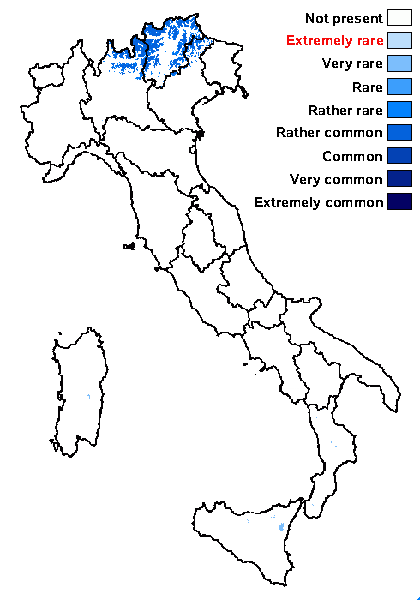
Predictive model
Herbarium samples
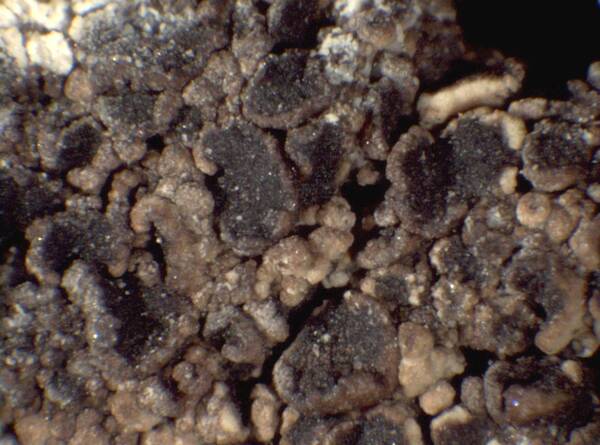
Miris Castello - CC BY-SA 4.0; Owner: Department of Life Sciences - University of Trieste
Antarctica, Terra Nova Bay.
Herbarium: TSB - Antarctic Herbarium
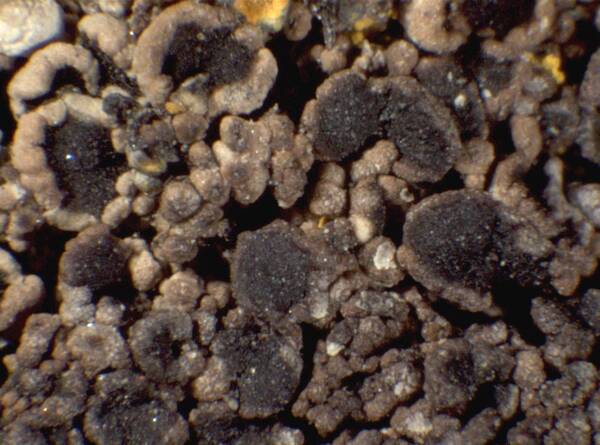
Miris Castello - CC BY-SA 4.0; Owner: Department of Life Sciences - University of Trieste
Antarctica, Terra Nova Bay.
Herbarium: TSB - Antarctic Herbarium

Miris Castello - CC BY-SA 4.0; Owner: Department of Life Sciences - University of Trieste
Antarctica, Terra Nova Bay.
Herbarium: TSB - Antarctic Herbarium
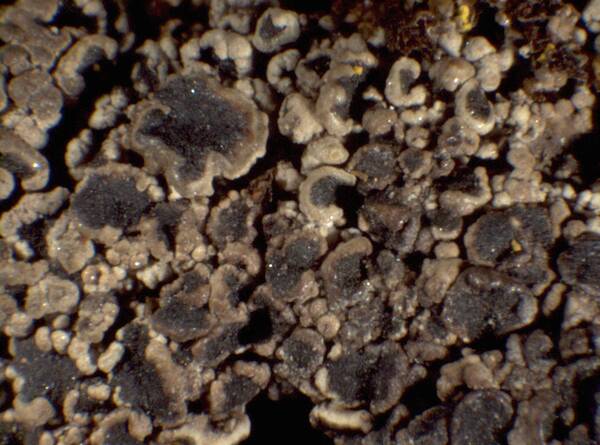
Miris Castello - CC BY-SA 4.0; Owner: Department of Life Sciences - University of Trieste
Antarctica, Terra Nova Bay.
Herbarium: TSB - Antarctic Herbarium
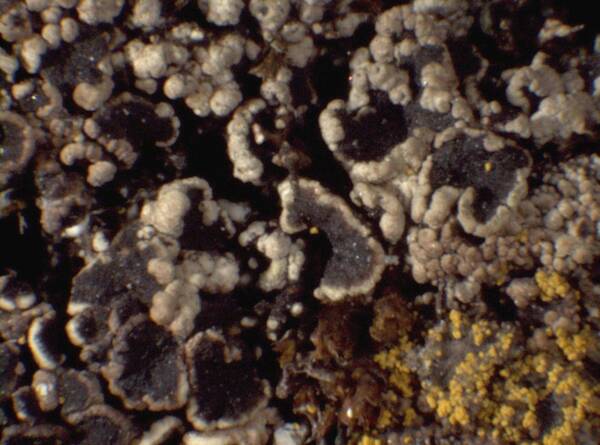
Miris Castello - CC BY-SA 4.0; Owner: Department of Life Sciences - University of Trieste
Antarctica, Terra Nova Bay.
Herbarium: TSB - Antarctic Herbarium
Growth form: Crustose
Substrata: bark, lignum, soil, terricolous mosses, and plant debris
Photobiont: green algae other than Trentepohlia
Reproductive strategy: mainly sexual
Commonnes-rarity: (info)
Alpine belt: rather common
Subalpine belt: rather rare
Oromediterranean belt: very rare
Montane belt: absent
Submediterranean belt: absent
Padanian area: absent
Humid submediterranean belt: absent
Humid mediterranean belt: absent
Dry mediterranean belt: absent

Predictive model
| Herbarium samples |

Miris Castello - CC BY-SA 4.0; Owner: Department of Life Sciences - University of Trieste
Antarctica, Terra Nova Bay.
Herbarium: TSB - Antarctic Herbarium

Miris Castello - CC BY-SA 4.0; Owner: Department of Life Sciences - University of Trieste
Antarctica, Terra Nova Bay.
Herbarium: TSB - Antarctic Herbarium

Miris Castello - CC BY-SA 4.0; Owner: Department of Life Sciences - University of Trieste
Antarctica, Terra Nova Bay.
Herbarium: TSB - Antarctic Herbarium

Miris Castello - CC BY-SA 4.0; Owner: Department of Life Sciences - University of Trieste
Antarctica, Terra Nova Bay.
Herbarium: TSB - Antarctic Herbarium

 INDEX FUNGORUM
INDEX FUNGORUM
 GBIF
GBIF
 DOLICHENS
DOLICHENS

